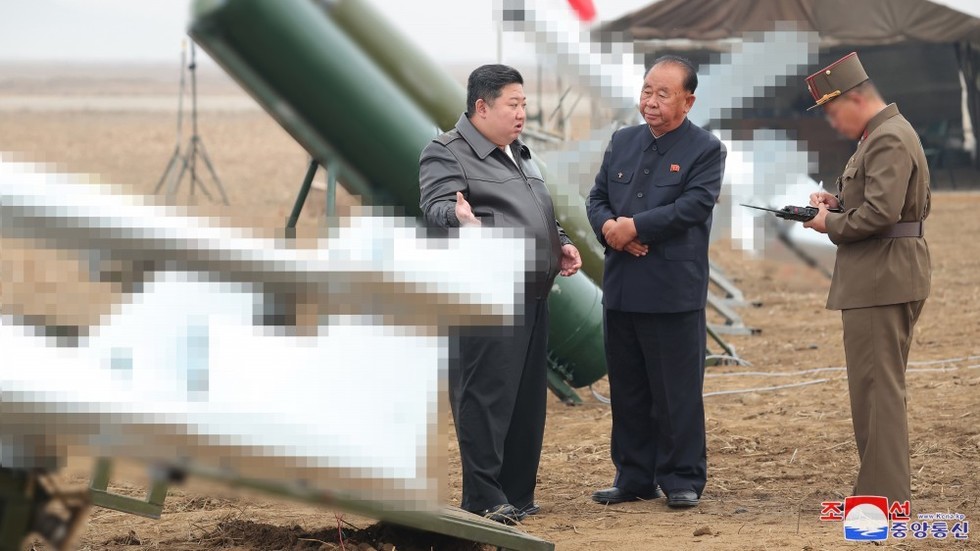North Korea is making significant advancements in its military capabilities through the development of new loitering munitions, particularly kamikaze drones, which are being spearheaded by its leader, Kim Jong-un. According to state media, Kim recently supervised a field trial of these domestically produced unmanned aerial vehicles (UAVs), emphasizing the urgent need for the nation to transition from the prototyping phase to full-scale mass production. This shift is crucial for North Korea’s military strategy, as the incorporation of unmanned aircraft is expected to enhance its operational capabilities substantially, allowing for more extensive use of technology in its defense arsenal.
During the tests, reports indicate that multiple models of these drones were observed in action, highlighting the diversity in their designs and operational functions. The drones are said to be developed by a research facility linked to North Korea’s Unmanned Aerial Technology Complex (UATC). The state media further disclosed certain technical aspects of the drones, including the use of boosters for launches and experimentation with various airframes. Notably, one of the prototypes showcased features a distinctive configuration with four wings arranged in a cross formation, indicating a focus on innovative design to improve flight stability and maneuverability.
The operational capabilities of these drones extend to both ground and naval warfare, with North Korea aiming to establish versatile UAVs that can adapt to various combat scenarios. The state news agency KCNA reported that the drones possess different range capabilities and can effectively utilize a homing mechanism after reaching the end of their programmed flight paths. This ability to autonomously engage targets is a significant step in enhancing the precision and tactical effectiveness of North Korea’s military operations, potentially reshaping the dynamics of regional security.
Images shared by state media depict Kim Jong-un observing the drones attack various targets, including tanks, using a steep-angle approach. This angle of attack is particularly effective in modern warfare, as it can lessen the likelihood of interception by enemy defenses. The showcasing of these trials serves not only to demonstrate the capabilities of the technology but also to bolster domestic and international perceptions of North Korea’s military advancements, reinforcing Kim’s image as a leader committed to strengthening his nation’s defense.
As North Korea continues to push for the rapid adoption of these unmanned systems, the implications for regional security are profound. The country’s focus on enhancing its military technology, especially in the realm of UAVs, indicates a strategic pivot that could alter the balance of power in the Asia-Pacific region. Concerns may arise among neighboring countries and the global community regarding how these developments could affect military engagements and the overall stability of the region, potentially leading to increased tensions or arms competition.
In conclusion, Kim Jong-un’s vision for integrating advanced unmanned aerial technology into North Korea’s military doctrine is becoming increasingly realized through ongoing development and testing of kamikaze drones. The implications of these advancements extend beyond mere military capability, as they also reflect North Korea’s broader ambitions on the international stage. The pursuit of full-scale production and systematic deployment signifies that North Korea is committed to solidifying its defense strategies, which may provoke reactions from other nations as they assess their own security postures in light of these emerging threats.

